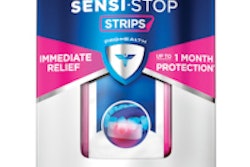
A systematic review published last year in the Journal of Dental Research (JDR) found little evidence to support the use of oxalates for treating dentin hypersensitivity (DH). Now a critical summary by the ADA Center for Evidence-Based Dentistry's (CEBD) review council lends further support to these findings (Journal of the American Dental Association, June 2012, Vol. 143:6, pp. 614-615).
"With the possible exception of 3% monohydrogen-monopotassium oxalate alone, there is no evidence currently available supporting the use of oxalates to treat DH," concluded author Ben Balevi, DDS, a member of the CEBD review council.
The JDR review, performed at the University of Washington School of Dentistry, pared down 677 unique citations to 12 reports and subjected them to a detailed analysis. Nine of them were split-mouth trials and eight evaluated a type of monohydrogen-monopotassium oxalate.
“There wasn't a strong indication that it was any better than doing nothing.”
— Ben Balevi, DDS
"No gold standard exists for measuring DH clinically," Dr. Balevi wrote. "Therefore, any comparison between the results of various studies is difficult."
Dr. Balevi credited the JDR study for its well-conceived design. "[It] contains a focused question, an exhaustive search of all types of evidence, a complete list of included and excluded studies, a rigorous risk-of-bias assessment and a comprehensive meta-analysis," he wrote. Consequently, he believes that the risk of having missed any unpublished studies is low.
The studies used different pain scales, such as verbal and numerical, and there was a lack of consistency in the duration of the studies, from immediately or up to one year after treatment. Because of these and other disparities, Dr. Balevi suggested that readers interpret the meta-analysis with caution.
However, he noted that some promising conclusions about 3% monohydrogen-monopotassium oxalate can be drawn from the data. The forest plot for it (n = 7) "shows a summary statistic predominantly on the side of the treatment's being effective, with the confidence interval just touching the line of no statistically significant difference," Dr. Balevi wrote. These results suggest that there is a clinical benefit to treating DH with 3% monohydrogen-monopotassium oxalate.
Applying the data
A key goal of the ADA critical summaries is to succinctly explain how the data can be applied in clinical practice, Dr. Balevi noted.
"We have tried to search for all of the systematic reviews that are pertinent to dentistry," Dr. Balevi explained in an interview with DrBicuspid.com. "The goal is that these reviews will be broken down into one-page summaries so that a general dentist can read them and it will help them make clinical decisions in a world of uncertainty."
In this case, when discussing the implications for dental practice, dentists should understand "that there's no evidence that oxalates work, except for the possible exception of 3% monohydrogen-monopotassium oxalate and if you're going to use it, take into consideration the cost-to-benefit ratio," he stated.
The results were in line with his own experience with oxalates, he added; their poor performance led him to discontinue using them 10 years ago.
"They were marketing it to dentists as an immediate solution to sensitivity," Dr. Balevi recalled, "and I had bought it and found that it didn't work very well, so it was interesting to see what the evidence said. It was consistent with what I had found: that there wasn't a strong indication that it was any better than doing nothing."
With a background in engineering and quantitative thinking, Dr. Balevi's forte is analysis, he noted. "The three questions I always tell dentists to ask when somebody comes into my office to promote a product are: 1) Does it work? 2) What are my alternatives? (people tend to forget that, which is surprising), and 3) What's the trade-off?"
When he applied this line of questioning to oxalates, he acknowledged that there isn't any evidence that they work, but that may be because there aren't enough studies to confirm it. Monohydrogen-monopotassium oxalate might work. To the second question, the alternative is doing nothing. And to the third question, the trade-offs are the risk and cost to the patient.
"Do they want to spend money on something that may work?" he said. "Maybe you can even take advantage of the placebo effect if it isn't expensive. You can try oxalates, but don't hold your breath. It may be an inexpensive method of treating the patient with minimal risk."
This summary and others like it do not reflect the official position of the ADA, he added.



















